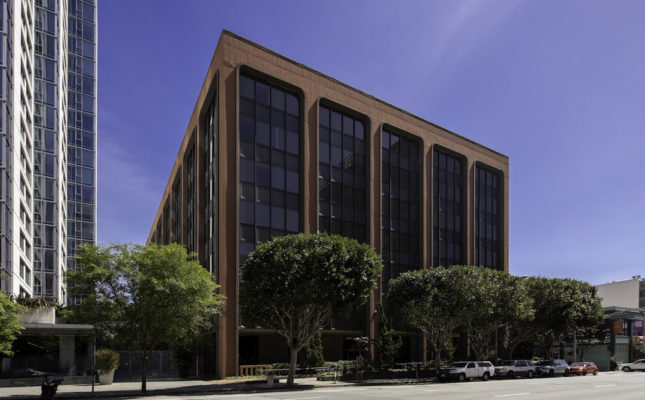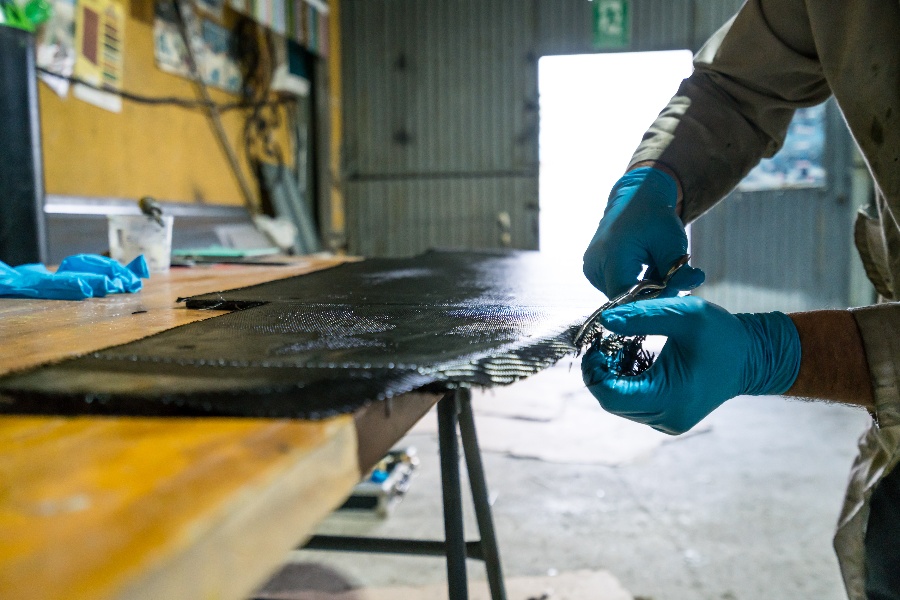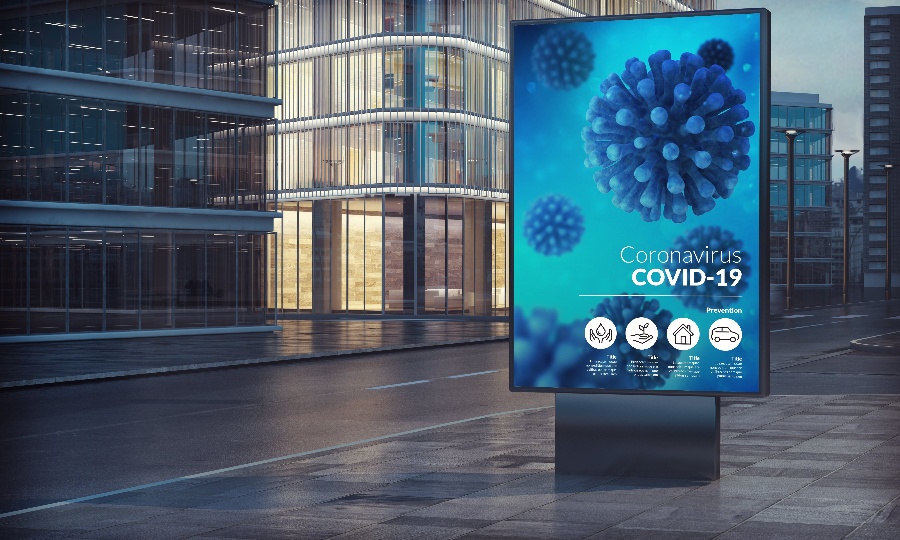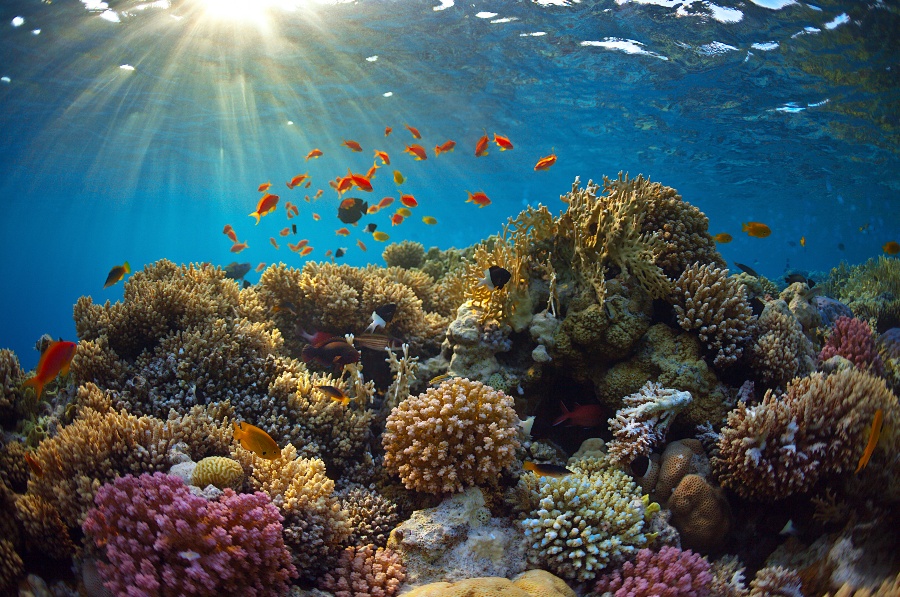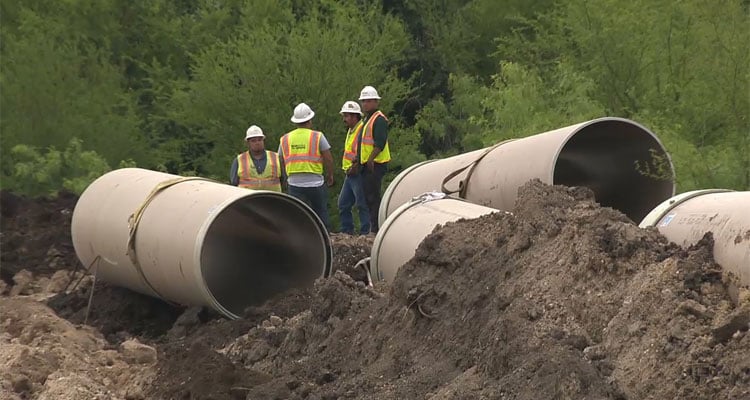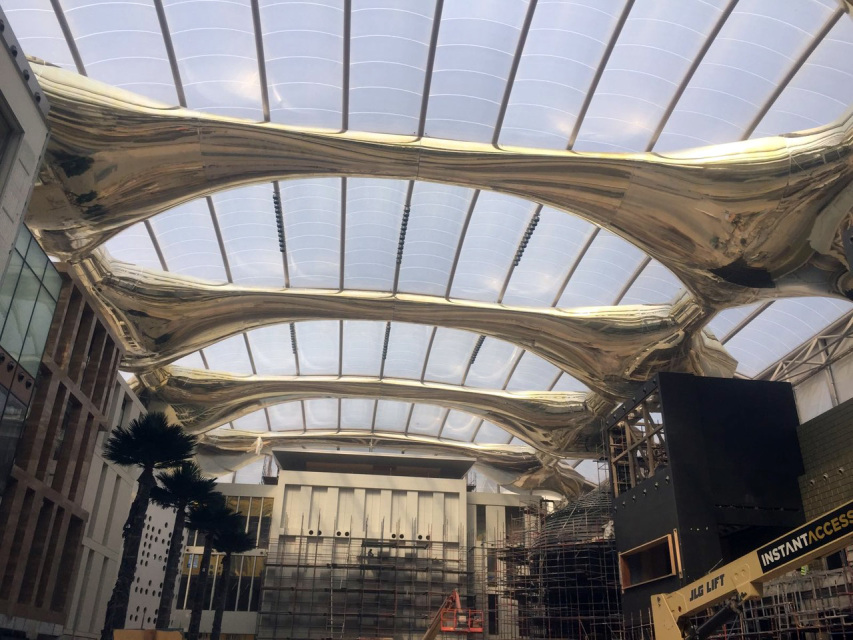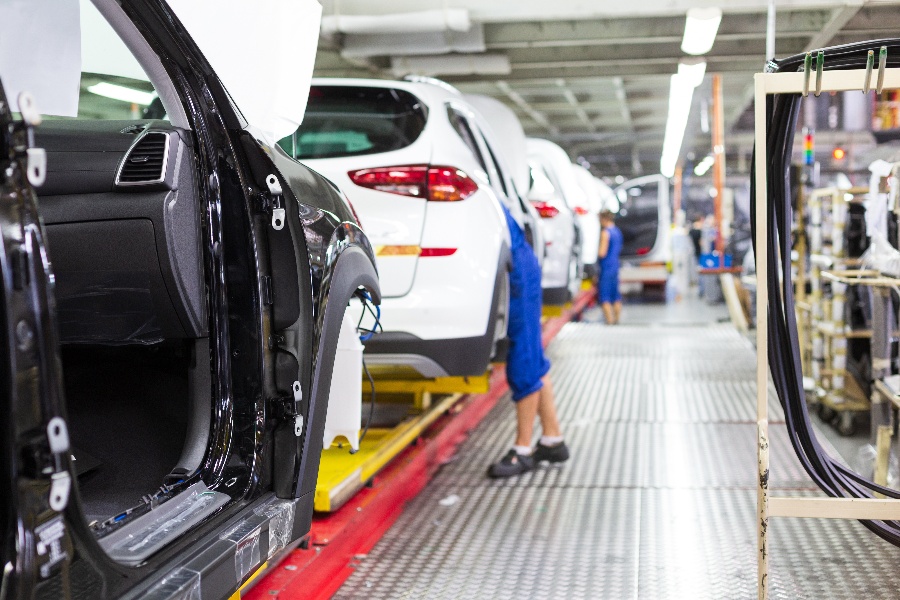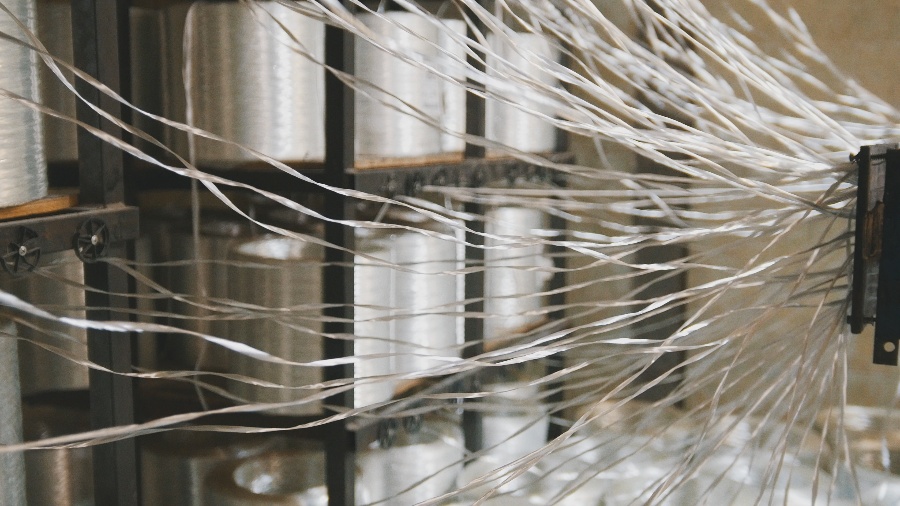
Office buildings in major cities are very expensive to maintain. Typically, rent for office space comes at a premium with utilities tending to cost more as well especially in the summer.
During the hottest months of the year, the cost of keeping offices in a building at a cool 68°F to 70°F is not cheap and can send electricity bills skyrocketing.
So, can sunshades help? When you think of a sunshade, the first thing that probably comes to mind is the old-fashioned awning for porches. Generally, these are wood or metal poles that go into the ground to act as supports for a heavy piece of fabric spread overhead. While these might work as a short-term solution, they are not ideal in the long run.
Wood poles are highly susceptible to rot caused by water damage, and metal poles can easily rust out in the elements. Fabric decays over time due to exposure as well. You will never see this type of sunshade used on the upper levels of any building. They are simply impractical.
On the other hand, Fiber Reinforced Polymer (FRP) composite sunshades can handle almost anything nature can throw at them. Pultruded products require little to no maintenance, and they have a lifespan of up to 80 years.
You won’t have to worry about damage caused by exposure to the elements such as sun, wind, or rain. Overall, any type of FRP composite upgrade made on a building is a worthwhile investment.
Fiberglass Growth
By 2025, the global fiberglass market is set to grow to US$ 14.3 billion, up from US$ 11.5 billion in 2020. From 2020 to 2025, the uptick is pegged at a compound annual growth rate (CAGR) of 4.5%.
With composite materials particularly fiberglass, project managers and developers can tailor the combination of fibers and resin to meet design requirements.
Take for example, in retrofitting work, more and more architects, builders and designers are discovering the benefits of using composite profiles. FRP profiles typically comprise two components: a polymer binder called a matrix and a reinforcement fiber.
Composites have a combination of characteristics that improve the final product over the individual components. Properties such as strength and stiffness will depend on the size, shape, weight/volume of the reinforcement fiber. The resin matrix ─ depending on the proportion and type ─ can also impact the physical characteristics of the end product such as resistance to impact. Additives can be applied to the final product to give characteristics such as color, fire resistance or resistance to ultraviolet rays.
A New Way to Cool Down
Now, there is a way to cut down on the cooling bill without making drastic changes to the building. This can be done by using fiber-reinforced polymer (FRP) composite sunshades.
Recently, business owners in major cities had FRP composite sunshades retrofitted to their office buildings. These innovative sun shades — which are functional, practical, and aesthetically pleasing — help keep the offices cool and the energy bill lower.
An example of an office building with new FRP composite sunshades comes out of San Francisco, CA. A mid-century office building — located on Folsom Street in the South Market area — was in desperate need of updates. Five floors were added to the structure. The lobby and ground floor retail facility both underwent an entire redesign.
Once the renovations were complete, the engineers decided to address factors such as natural lighting, environmental performance, and the issue of shading. The goal was to recreate a more energy-efficient building.
The owners brought in a team of engineers and architects specializing in FRP composites. The team made the decision to retrofit the sunshade cladding where the sun shades were made from FRP composites.
Why FRP Composites?
The team needed a material that would serve two key purposes — be functional and aesthetically pleasing. It has to be flexible enough to adjust for solar angles and strong enough to withstand high winds. FRP composites fit the bill.
FRP composite materials were put through rigorous wind tunnel tests to ensure that they would be able to dampen vibrations from high winds without becoming compromised. These materials excelled at the task. Then, the pultrusion process for these custom sunshades began.
Initially, the pultrusion process is the same for every piece. Fiber bundles were pulled through a liquid resin bath and injected with additives and colorants according to what the client wanted. The variation came during the curation process.
The sunshades began to take their final form in a particular mold that was designed to meet the solar angles for this specific building. The beauty of FRP composites is that they can be custom-created to a client’s specific requirements.
Once the sunshades were cured, they were transported to the office building and installed. In general, as FRP composites are lightweight and manufactured in manageable pieces, they are much easier to install. Shipping costs are relatively lower.
In this particular case, each piece of cladding was attached to a curtain wall module. This was done using a pre-attached Z-shaped adapter made from aluminum. Attachments were installed to the FRP composite pieces. Holes can be pre-drilled once the pieces have finished curing, and the sunshades can arrive at the job site ready to install.
When the sunshades arrived at the San Francisco office building, workers were able to easily attach them with screws to the aluminum fins on the curtain wall frame. Once that step was complete, the team then attached the entire unit to the exterior of the building. Because of the way the sunshades were installed, they are easily accessible and can even be removed.
Overall, 680 sunshades were installed on this particular office building. Each one measured 6’ in width and had a graduated depth of 1’2” to 2’2” from the second to the twelfth floors. This gradual increase in depth was meant to accommodate the changing angle of the sun throughout the day.
Fiberglass composites are some of the most customizable products available on the market today. Available in semi-transparent, translucent, and opaque finishes, you can even have pigments added for colorful options.
The Takeaway
The benefits of FRP composite materials are numerous. They are highly customizable and resistant to high winds, non-conductive and resistant to corrosion, impact, heat, moisture, and even insects.
Here at Tencom, our experts have a deep knowledge of pultrusion and pultruded products for over 50 years. We specialize in various applications of fiberglass and can customize products to meet your specific requirements.
From sun shades to window reinforcements, to sporting goods and everything in-between, our FRP composites will last longer than wood or metal products.
Get in touch with us today to find out more or to request an estimate.




